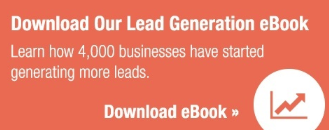Using a variety of inbound marketing mechanisms, marketing departments collect as many leads as possible and evaluate them for likelihood of producing a sale. 
These Marketing Qualified Leads (MQL) are then transferred to the sales department who introduce processes designed to clinch the sale.
Most organizations develop their own standards for what makes a qualified lead, but throughout most industries the following factors are usually emphasized:
- Website visits—Visitors to your website are seeking information and repeated visits suggests that your company has already made an impression on a potential customer. The key to increase this qualification is through paid ads and search engine optimization.
- Acquired content—Leads who have downloaded content from your website like white papers and ebooks are more likely to have an elevated opinion of your company. Convention visitors who have taken news or information packets are also likely to be amenable to a sales proposition.
- Provided contact information—Granting your company the information necessary to establish a sales relationship is usually an encouraging sign that this is a qualified lead. It is important to ensure that the contact is a purchasing decision maker, or it may fail to meet your sales department’s criteria for a qualified lead.
- Company research—Once another company has initiated a relationship, your marketing department needs to perform the research to ensure that they are more than merely browsing. Learning who their current vendors are and what kinds of deals they are receiving can help your marketing team tag this as a qualified lead or not. If your company can undercut the competition, improve the client’s performance, or deliver better service, the likelihood of a conversion dramatically improves.
While it is important to identify qualified leads, there are also several methods your organization should be using to convert qualified and less-than-qualified leads into sales.
- Immediate follow up—A study by Lead Response Management shows that a few minutes can make a significant difference in conversion rates. Leads that are contacted in the first five minutes after a website submission are four times more likely to convert than those in the following five minutes and 21 times more likely to convert than those after 30 minutes.
- Determined responses—Some sales teams would like every lead to yield an immediate conversion, but most qualified leads require some degree of effort and time. Some qualified leads can be converted, but require more time and investment than your sales team may be willing to devote.
With a well-designed inbound marketing strategy, your marketing team can deliver highly qualified leads to your sales department.
Using some effective mechanisms for identifying qualified leads based on repeated impressions, activities and solid background research, your marketing team can deliver premium sales opportunities.





